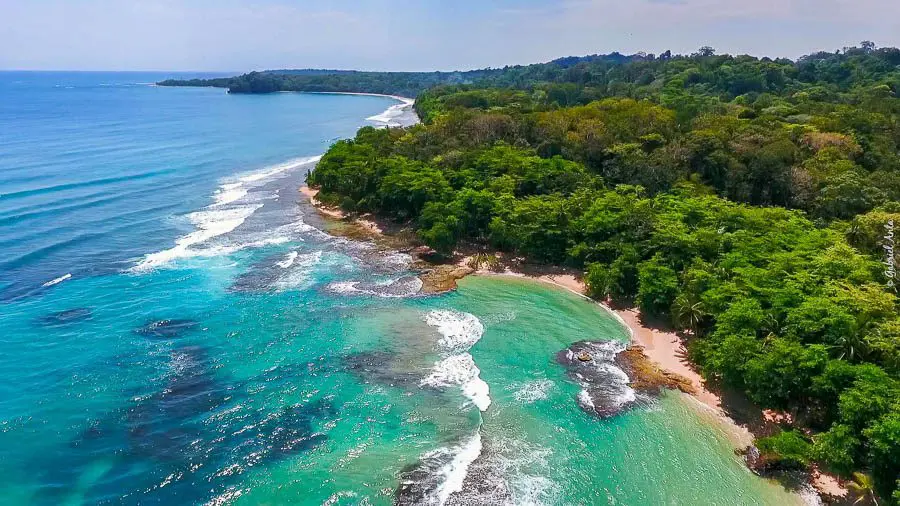From cloud forests to Caribbean beaches, Costa Rica has long had a place on the world’s wanderlist. But in 2025, it’s not just a destination, it’s become a lifestyle shift for digital nomads, young families, and anyone craving a better balance between life and location.
This guide breaks down why Costa Rica continues to attract long-term travellers, how real families are managing the move, and what it actually costs to live well here in 2025.
Planning your own move? Here’s a detailed breakdown of the cost of living in Costa Rica from a family preparing for two months of life on the ground.
About This Guide
We’re a real family preparing to spend two months in Costa Rica as part of our long-term travels through Central and South America. This guide is based on 2025 pricing, real-time research, and dozens of conversations with fellow nomads and expats who’ve lived in the region.
We’ve already mapped out our route, accommodations, and weekly spending, and we’ll be updating this post with on-the-ground insights once we land.
The Allure of Costa Rica in 2025
Costa Rica isn’t just photogenic, it’s functional. The country has evolved into a hub for conscious travellers who care about sustainability, family-friendly culture, and meaningful day-to-day experiences.
In 2025, three major trends are drawing even more attention:
- Digital nomad visas: Making long-term stays more accessible than ever.
- Remote schooling: With flexible learning growing, more families are turning travel into education.
- Affordable adventure: Surfing, wildlife, volcanoes, and zip lines? Still cheaper than amusement parks back home.
There’s also a sense of momentum. With infrastructure upgrades, better internet access, and rising demand for ethical tourism, Costa Rica isn’t just resting on its reputation; it’s growing with its visitors.
Why Families and Remote Workers Love It
1. Safety and Political Stability
Costa Rica abolished its army in 1948, and has invested in peace and education since. For families or solo travellers, this translates to one of the safest environments in the region.
2. Pace of Life That Suits Kids and Grown-Ups
The national motto, pura vida, isn’t just branding. It’s the rhythm of life here, slower, more present, and often centred around nature. In towns like Atenas or Grecia, kids still walk to school, neighbours know each other, and stress feels a world away.
3. Healthcare That Works
Whether you go public (Caja) or private, Costa Rica has solid healthcare. Expats can access both systems, and private clinics in areas like San José, Liberia, or Escazú offer high standards for a fraction of U.S. prices.
4. Built-In Adventure
For families and outdoor-loving travellers, no two days are the same: Spotting monkeys in Manuel Antonio, snorkelling in Cahuita, or hiking around Arenal — it’s a choose-your-own-adventure playground.
5. Expat + Nomad Communities
Coastal hubs like Nosara, Uvita, and Santa Teresa now have cafés with fibre internet, co-working spaces, and even international schools. You’re never far from someone on a similar path.
Real Cost of Living in Costa Rica (2025)
Let’s talk numbers, what does it really cost to live here comfortably?
Rent
- 1-bed apartment (rural/tico town): $400–$600/month
- 2–3 bed house near beach/tourist town: $1,200–$2,000/month
- Luxury furnished rentals (remote-worker hot spots): $2,500+/month
💡 Tip: Inland mountain towns often offer better value than beachside hubs.
Groceries + Eating Out
- Groceries for a family of 4: ~$450–$600/month
- Meal at a local soda (small eatery): $4–$8
- Western-style restaurants: $15–$30 per person
🛒 Local produce markets (ferias) offer big savings and better fruit.
Transport
- Monthly bus pass: ~$30–$50
- Car rental (long-term): ~$500–$700/month
- Fuel prices: ~$5.50/gallon
Uber works in major cities. Taxis in rural areas tend to be more expensive.
Other Essentials
- Internet (fiber): $35–$60/month
- SIM card with data: ~$10–$25/month
- Private school (optional): $300–$900/month
- Childcare or babysitting: $4–$8/hour
How Real Families Are Making It Work
“We’re a British family with two kids, prepping for two months in Costa Rica. Our costs are close to £1,800/month and that includes rent, food, local transport, and excursions.”
— TravelventureFour, a long-term family travel blog
Families and slow travellers are finding creative ways to stretch budgets in 2025:
- House sitting + work exchanges in exchange for accommodation.
- Short-term rentals through Facebook groups vs. Airbnb.
- Travelling off-season (May–November) to avoid inflated prices.
- Batch cooking and buying from ferias to cut daily food costs.
- Choosing destinations with walkability, reduces transport needs.
There’s also a strong digital nomad presence, creators, coders, writers, and teachers, finding stable income while living on less than half their previous costs.
Lessons Learned (And What to Avoid)
Costa Rica is magical, but not always cheap if you don’t plan smartly. Some common mistakes:
- Underestimating costs in tourist towns like Tamarindo or Santa Teresa.
- Booking Airbnbs too early – better prices are often found once you arrive.
- Ignoring visa duration: Tourist visas are 90 days, but extensions and exits are required unless you hold a nomad visa.
Pro tip: Always ask your Airbnb host for a monthly rate. Many offer big discounts once you’re on the ground.
Is Costa Rica Still Worth It in 2025?
Absolutely, if you know what you’re walking into.
Costa Rica offers one of the best lifestyle-to-expense ratios for families and long-term travellers. It won’t always be the cheapest option, but the return on experience, safety, and nature is huge.
And for anyone planning a life reset, or just a longer-than-usual trip, the country makes it easy to say yes.
Ready to dive deeper? This full cost of living breakdown in Costa Rica shares real prices, family-tested tips, and location-by-location comparisons.
Final Thoughts
In 2025, Costa Rica continues to prove it’s not just a tourist stop, it’s a viable lifestyle base for families, creators, and location-flexible workers alike. With its blend of nature, infrastructure, and warm community vibes, it offers far more than pretty beaches.
Just bring some patience, a flexible budget, and a healthy appetite for mangoes.



































